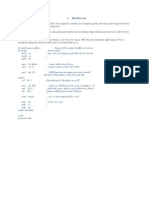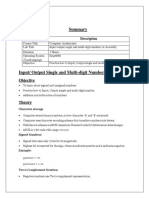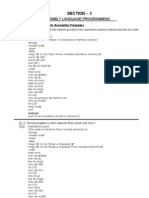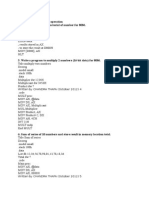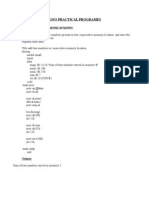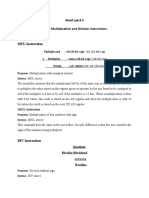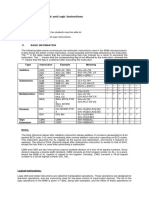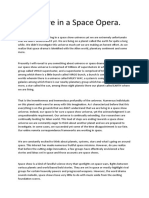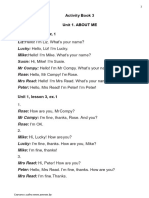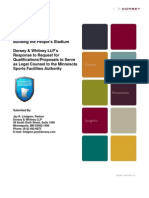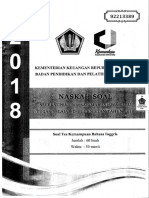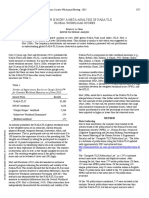0% found this document useful (0 votes)
12 views2 pagesLab10 Input Output
The document outlines a lab exercise on assembly language programming focused on input/output operations, particularly converting ASCII characters to numeric values and vice versa. It includes detailed code examples for reading multi-digit numbers, processing them, and displaying results in decimal format. Additionally, it provides a list of assignments for students to practice various programming tasks related to number processing and string manipulation.
Uploaded by
SAURAB GyawaliCopyright
© © All Rights Reserved
We take content rights seriously. If you suspect this is your content, claim it here.
Available Formats
Download as PDF, TXT or read online on Scribd
0% found this document useful (0 votes)
12 views2 pagesLab10 Input Output
The document outlines a lab exercise on assembly language programming focused on input/output operations, particularly converting ASCII characters to numeric values and vice versa. It includes detailed code examples for reading multi-digit numbers, processing them, and displaying results in decimal format. Additionally, it provides a list of assignments for students to practice various programming tasks related to number processing and string manipulation.
Uploaded by
SAURAB GyawaliCopyright
© © All Rights Reserved
We take content rights seriously. If you suspect this is your content, claim it here.
Available Formats
Download as PDF, TXT or read online on Scribd
/ 2







